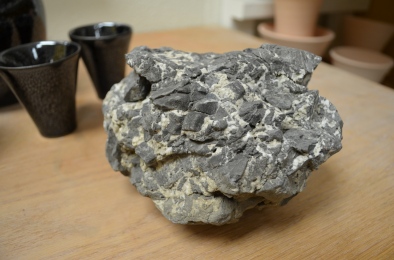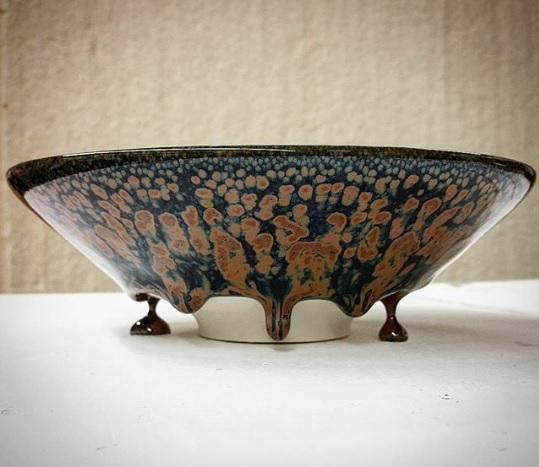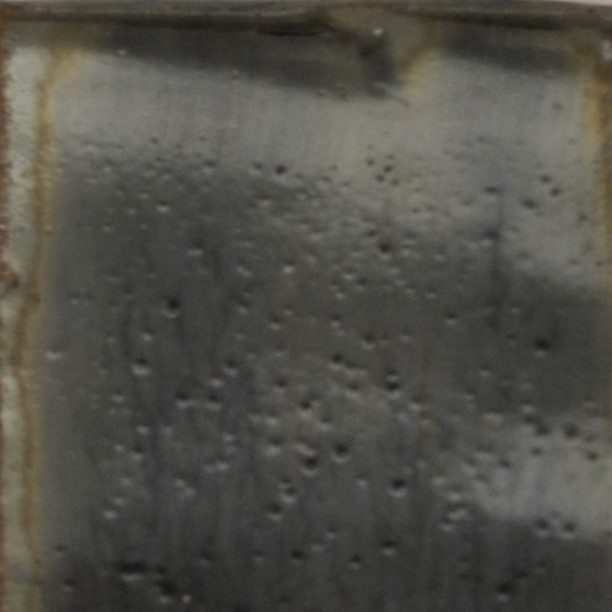Tag: glaze
Steve Loucks – Easy Way to Adjust Glazes
Here’s a great video that’s absolutely worth the watch!
Books for Glaze Prospectors
Without a doubt, Pioneer Pottery is the best resource for you diggers out there. Micheal Cardew was an absolutely incredible potter and glaze wizard. Here’s the book summary from Amazon:
You can find it here.


Pioneer Pottery is one of the classic texts in ceramic literature. Its author, Michael Cardew, was one of the seminal figures in British ceramics and this book, written partly in response to his time spent in Africa, has influenced generations of potters around the world.
As one of the early and influential figures in British ceramics, Michael Cardew was asked in 1942 by the Crown Agents to go to Nigeria to set up a pottery training center. It was his experiences there, as well as his previous time spent in the Gold Coast, that formed the basis for this book. In addition to discussions about the basics of clay and glaze materials and their properties, Cardew shows how to make pots in the Kwali, Jebba, Vume, Ilorin, and Hausa traditions of western Africa. This book is the first book to discuss all aspects of the pottery making process from materials through marketing. Michael Cardew found it necessary to find out and do everything for himself, and this is what lies behind this book. The consequence is that it is filled with a sense of discovery and firsthand knowledge.
A second amazing book is Glazes From Natural Sources. I like Sutherland’s perspective, and his instructions on building a home made ball mill and pugmill are super interesting. Although US buyers will probably find this one a little more expensive, it’s a great resource to have. Here’s the Amazon summary:
Glazes from Natural Sources: A Working Handbook for Potters, 2nd edition


Any real education in ceramics must involve, from the outset, an appreciation of the source materials—the rocks around us. While good, throwable clay may be a regional commodity, there is no part of the world that will not yield potential glaze materials in abundance. Potters therefore need to know how to exploit the special properties of local rocks quickly, reliably, and methodically. This new revised and updated version of Brian Sutherland’s classic book on making glazes from natural sources explains how to locate glaze material and construct, test, and use the glazes created.
Glazes from Natural Sources discusses rock types and other likely sources of supply, the making of test pieces, and the use of blend systems and constructions. The author also clarifies the Seger system of glaze presentation for those who, like himself, have found it difficult to grasp and apply. He covers, and supplies, formulae for glazes for all temperatures—from raku to stoneware and porcelain—and includes sample recipes. The book emphasizes careful planning and control to ensure results that are repeatable. This makes the science behind making glazes from natural sources both understandable and feasible.
Glazes from Natural Sources is fully illustrated, with diagrams of techniques demonstrated as well as images of the finished works of potters to show the results of these natural glazes. First published in 1987, this book is considered a classic by ceramicists. This edition includes a new chapter by glaze expert Nigel Wood.
Limestone Black Glazes
Not exactly Oil Spots in the truest sense, these two variations were concocted and tested along with the rest of my oilspots glazes. Both of these recipes utilize some local dolomitic limestone I found and incorporated into the recipes. If you want to re-create these, using a mix of 1/2 and 1/2 Dolomite and Limestone will get you very close.

Oilspot Firing Schedules
Here’s my Lava Oil spot firing schedule, which always looked best fired in a neutral/oxidation atmosphere in a gas kiln.

Shizuku Yuteki Variation
Here’s another Oil Spot I put up on Glazy.org.
You might notice that this one has a significant addition of Cobalt, half and half Custer (Potash) and F4 (Soda) Feldspars, calcined talc, and 2% Manganese. Typical that I changed too many things to give a really useful side-by-side comparison. But I suppose when I’m coming up with new variations, that’s always been my style.

Some observations on this one:
Cobalt goes a long way and pretty dramatically alters an oilspot. With a .25%-.5% addition you get a nice shift from brown and russet glaze matrix to a darker solid black glass. Beyond 1% you can get some really nice silvery qualities to the spots. The drawback is that the more you add, the more refractory the glaze tends to get – and the longer it takes for the glazes to heal.
Shards

“I have not failed. I’ve just found 10,000 ways that won’t work.” – Thomas A. Edison
Shizuku Yuteki Oilspot
Epsilon Phase Iron in Tenmoku
For those of you who are really interested in Oil Spots, there’s an article from 2014 that I think is worth a long look. This particular article was what got me interested in SEM microscopy when I was in Grad School:
Learning from the past: Rare ε-Fe2O3 in the ancient black-glazed Jian (Tenmoku) wares – Nature.com
Abstract
Ancient Jian wares are famous for their lustrous black glaze that exhibits unique colored patterns. Some striking examples include the brownish colored “Hare’s Fur” (HF) strips and the silvery “Oil Spot” (OS) patterns. Herein, we investigated the glaze surface of HF and OS samples using a variety of characterization methods. Contrary to the commonly accepted theory, we identified the presence of ε-Fe2O3, a rare metastable polymorph of Fe2O3 with unique magnetic properties, in both HF and OS samples. We found that surface crystals of OS samples are up to several micrometers in size and exclusively made of ε-Fe2O3. Interestingly, these ε-Fe2O3 crystals on the OS sample surface are organized in a periodic two dimensional fashion. These results shed new lights on the actual mechanisms and kinetics of polymorphous transitions of Fe2O3. Deciphering technologies behind the fabrication of ancient Jian wares can thus potentially help researchers improve the ε-Fe2O3 synthesis.
Concrete Celadon Glaze
Here are a couple of sets I made using concrete as a glaze material. It was pretty simple to make. The project began after finding two concrete paving tiles in a construction rubble dump. The larger one I kept for the bases, and the other I busted with a sledge hammer into gravel sized chunks. The gravel went into a bisque kiln, and the remaining slab went into the brick saw to get cut in half. Once the calcined concrete came out of the bisque, the friable powder went into the ball mill and ran for a relatively short 8 hours. After sieving out the remaining sand and large pebbles, I had myself a pretty nice looking glaze slurry. Overnight I noticed a lot of settling, I added a small bit of epsom salt, and what I guessed to be about 1-5% by weight of bentonite. It still settled a bit, but not so much that you couldn’t use it. The application of the glaze was dipping, with a bit of spraying to build a thicker layer of glaze on the top half of each piece.










